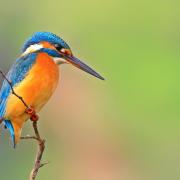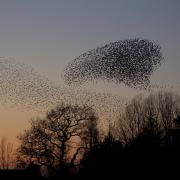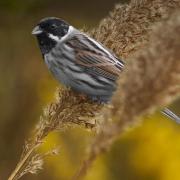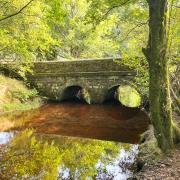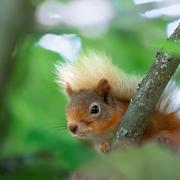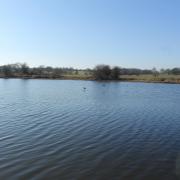After the devastating early spring storms, green shoots of recovery start to appear in Lytham’s woodlands
Wild snow flurries have passed over but left soggy turf and patches of slippery white slush on the top of the dyke at Lytham Dock.
A group of five swans are grazing in a waterlogged field between the dyke and the main road. An hour ago they’d have been sheltered by the dyke but the wind has moved round to the east and left them exposed. They don’t seem bothered.
Ahead, cloud still hangs over the south side of the estuary and Hesketh Bank is invisible beyond the stretches of grassy bog and tawny-brown reedbeds. It’s thought that the Ribble estuary may have once housed several ‘longphorts’ – Viking naval bases. I wonder how different the estuary looked to those who sailed here then. Looking out beyond the line of Wrea Brook and the dozens of tiny capillaries channelling water from it, the river is invisible and it’s hard to imagine anything of size travelling along it.

I dip my head out of the wind for a minute and hear the cry of oyster catchers. I spot a pair of them out of the corner of my eye and follow their low flight over the dyke and into the swan field. Behind me a boat owner is sweeping snow from the deck of his yacht in the dock at the side of the dyke. He is hardy. The temperature is hovering at around two degrees but it feels colder. It is a day for withdrawing and shrinking into the shelter of enclosed spaces, natural or man-made, so I head away from the estuary to the woods at Lytham Hall.
The approach to the hall is surprisingly clear of debris after the latest onslaught. Today’s snow and rain came on the coattails of storms and strong winds but it seems the earlier autumn storm, Arwen, has already cleared out the most vulnerable trees and branches.
The wild weather has taken its toll in other ways. Tree trunks are sodden on all sides and closer to the hall, two nuthatches are probing a rotten bough of the giant magnolia tree. It’s too wet and slippery for children to be out scaling its branches today and, even as the sky starts to brighten, it’s hard to imagine the tree ever being in bloom.

On the far side of the hall, the woods are full of the sound of water dripping from trees and the chatter of bluetits, bearded tits, blackbirds and, in the background, the occasional crow.
Thin, delicate slices of yellow fungi bring muted colour to log piles that litter the floor. For a second I imagine being small enough to crawl into the dark, mossy shelter of the log pile but walk on to where snowdrops lie around the base of a tall pine tree. Among them a couple of daffodils have come into bloom – like the changing of the guard, from white to yellow.

Looking at all these flowers, you wonder how anything so insubstantial could possibly bulldoze its way through inches of earth before emerging into the light and finally completing its triumphant transformation. The sense of wonder never really goes. A year is just long enough for it to fade and then return, as if for the first time, each spring.
Patches of blue sky are growing but the grounds of the hall are still largely empty. The extreme weather has added another feature to the landscape where small ponds have formed from rain and snow. The dull surface slush has melted in places so the new ponds mirror the trees along the drive.
Something to the left catches my eye as I follow the driveway out of the park. By a sheer fluke, high winds have blown last year’s seeds off a nearby alder tree and hooked them onto the slender ends of a beech tree branch. I count five alien seeds, a mix of cones and the dangly catkin of the male.
I take a picture and look at it in the warmth later. Somehow, I had managed to spot the unexpected, but, I now see, completely missed what I had come looking for. Zooming in between two of the stray alder seeds, are tightly-furled, arrow-sharp rolls of leaf that have emerged from buds on a stem of the beech tree.

The weather of the last few days has cut power supplies to hundreds of homes. Trees have fallen and roads and rail lines been forced to close but the business of spring has not been interrupted.














